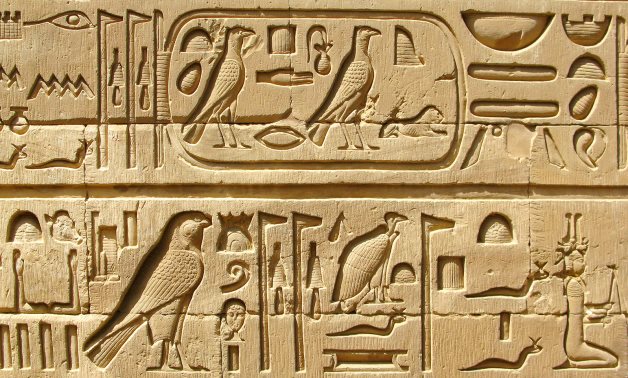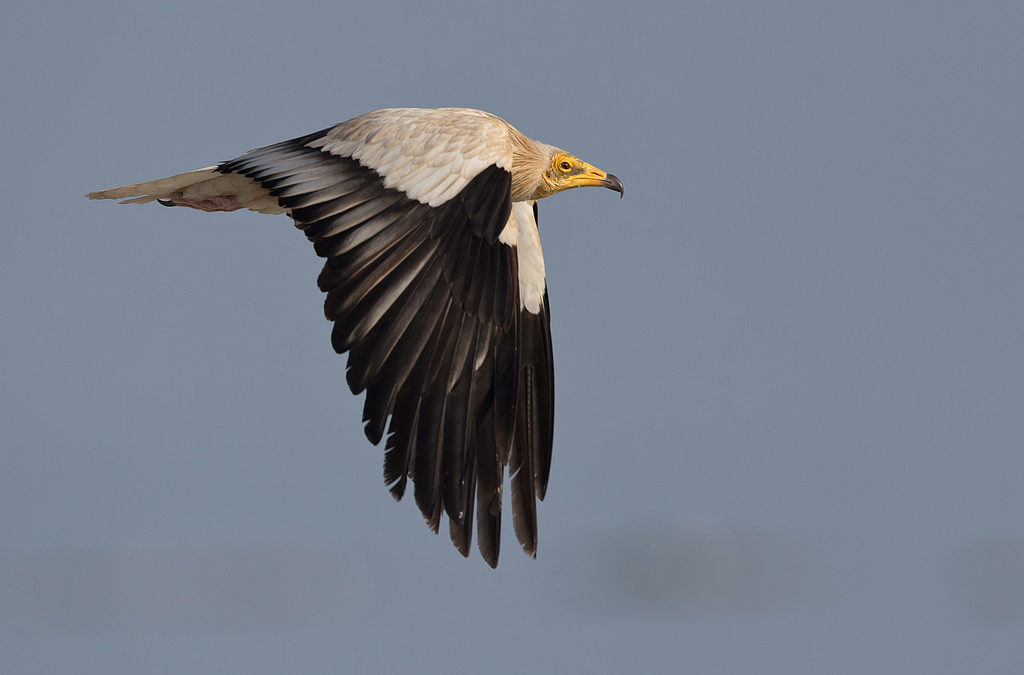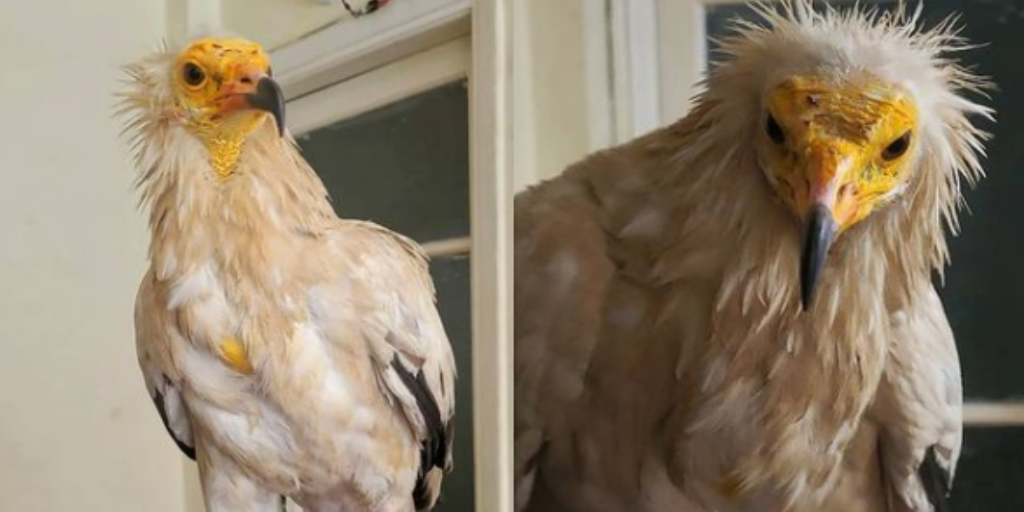A vulture named Mindy was rescued by Egyptian NGO Nature Conservation Egypt (NCE) from an illegal raptor market. The rescue is a notable victory for nature conservation efforts considering that she is an endangered Egyptian Vulture.
The name ‘Mindy’ was chosen to honor the memory of Mindy Bahaa El-Din, one of the individuals responsible for establishing NCE in 2005. Since then, the NGO has been working on conserving Egypt’s natural heritage, and it is a partner of Birdlife International, a global network striving to protect birds and biodiversity.
“The NCE team is always observing the black market for wild animals in Egypt, especially the market for raptors,” says NCE Communication Officer Nouran Tawfik. She adds that the NGO managed to rescue Mindy from local hunters in Aswan with the help of a responsible local hunter aware of the importance of conservation.
About the Egyptian Vulture
The Egyptian Vulture is the only type of vulture in the world capable of using tools, as it opens eggs by hammering down on them with pebbles. It is also the smallest and only long-distance migratory vulture native to Europe.
It can fly up to 640 kilometers per day and can cover a distance of five thousand kilometers during its migration between Europe and the southern edge of the Sahara. Egypt is an important spot in the passageway of the Egyptian Vulture, particularly the Suez land bridge, as it utilizes thermal lifts to soar efficiently.
It is admired for its intelligence in several cultures, including that of ancient Egypt, where it used to nest on the pyramids of Giza and was included in the hieroglyph alphabet as the letter ‘A.’ It is also believed that the vulture was protected by pharaonic law, making it a common sight in the streets and therefore granting it the nickname the “pharaoh’s chicken.”

The Egyptian Vulture population has witnessed a drastic 50 percent decline throughout the last 40 years due to a variety of reasons, including poisoning from agricultural chemicals, decreased food supply, loss of habitat, and collisions with electricity infrastructure.
Sadly, only an estimated 12 to 38 thousand Egyptian Vultures remain worldwide; making it an endangered species currently listed in the Birdlife red list.
“The number of Egyptian Vultures in Egypt is undergoing several studies; most of the existing populations are located in Aswan and Shalateen,” Tawfik adds.
Conservation Efforts by NCE
Since late 2019, NCE has been conducting research on veterinary medicinal substances that poison Egyptian Vultures, such as pesticides and nonsteroidal anti-inflammatory drugs (NSAIDs).
In addition, the NGO planned a trip in 2020 to collect data on potential threats on migrating Egyptian Vultures crossing Suez for their spring migration to Europe. In addition to identifying hot spots for the vultures’ migration, the NCE team also interviewed government officials and farmers in the area to collect as much information as possible.
The NGO is also the official representative of the Egyptian Vulture New Life project in Egypt to further expand efforts to help protect this majestic vulture from extinction.
What’s Next for Mindy

Since her rescue, Mindy the vulture has been undergoing a rehabilitation process ahead of her release back in the wild.
“The Egyptian Wild Animals Service (EWAS) is helping us in Mindy’s rehabilitation process, which includes feeding and training her until she’s strong enough to be released,” Tawfik explains.
She adds that Mindy will soar in the skies once again after her ideal release date is determined by experts from Egypt and Europe.
For updates on Mindy’s status and release date, follow Nature Conservation Egypt on Instagram.







Comments (0)